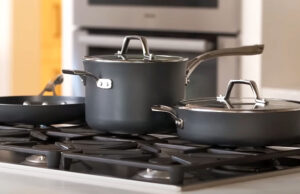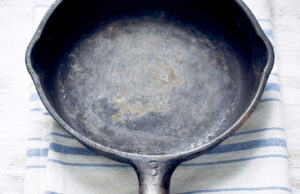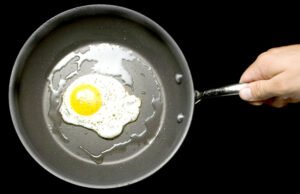As an Amazon Associate, I earn from qualifying purchases at no extra cost to you.
Where is My Dishwasher Filter? Find It Fast with This Easy Guide
You open your dishwasher after a wash cycle, but your dishes are still dirty. You wonder what’s wrong. You may not know this, but the filter inside your dishwasher could be blocked. If you’ve been asking, “Where is my dishwasher filter?” — you’re not alone. In this article, you’ll learn exactly where to find the filter in your dishwasher, no matter what brand or model you have. It’s easier than you think, and I’ll guide you step by step like a friend helping you in your kitchen.
Open Your Dishwasher and Check the Bottom Area
When you’re trying to find your dishwasher filter, the first thing you need to do is open the dishwasher door and pull out the bottom rack. Most dishwashers are built with the filter at the bottom, below the spray arms. You don’t need any tools for this step, just your hands.
Take a look at the bottom of your dishwasher. You might see a round or square piece in the middle that looks like a mesh screen or a twist cap. That is likely your filter. Some dishwashers hide it under a spray arm, while others place it right in the center for easy access.
Some filters look like small cones or flat mesh covers. You might see food bits around it. That means it’s working hard but needs cleaning. If you notice water pooling at the bottom or bad smells coming from your machine, your filter is probably dirty.
Gently remove any food debris that you can see. It’s okay to use paper towels to grab the gunk. Don’t worry — this is normal and happens over time as your dishwasher collects food bits from your dishes.
You don’t need to pull anything apart yet. At this point, you’re just locating the filter. If you don’t see anything right away, shine a flashlight inside the tub. Sometimes the color of the filter matches the tub, making it hard to see.
- Open the dishwasher and slide out the bottom rack.
- Look for a round or square mesh piece at the bottom center.
- It may look like a twist cap or a mesh screen.
- Use a flashlight if you can’t see clearly.
- Remove visible food debris gently.
Twist and Remove the Filter Cover
Now that you’ve found the filter, it’s time to remove the cover. Most dishwasher filters are either twist-and-pull types or slide-out mesh screens. Check if there’s a circular part that looks like a cap. If yes, try turning it to the left (counter-clockwise). Don’t force it; just try gently. It should loosen with little pressure.
You might hear a soft click when it comes loose. Once it’s loose, pull it up carefully. The filter might be wet or slimy, which is normal. You might even notice some gunk stuck to it. If it’s hard to remove, check your dishwasher manual or search the model number online to find the unlocking direction. Some filters turn slightly before pulling out.
Be gentle so you don’t break any plastic tabs. If the filter seems stuck, wiggle it softly. Don’t use tools, as that might damage it.
In some dishwashers, there’s a lower flat filter underneath the round cap filter. If you see one, lift it out carefully. It might be a bit bigger and shaped like a tray.
If you find both a round and flat filter, you’ll need to clean both of them. This will help your dishwasher run better and make your dishes come out cleaner.
- Twist the round filter cap to the left to loosen.
- Pull up gently to remove the filter.
- Don’t use tools or force.
- Some dishwashers have a second flat filter under the first one.
- Remove both filters if needed.
Wash the Filter with Warm Water and Soap
Once the filter is out, take it to your sink. Run warm water over it to remove food particles and grease. Use a soft sponge or an old toothbrush to scrub gently. Don’t use steel wool or anything rough, because the filter material can tear or wear out.
You can use dish soap for extra cleaning. Rub both the inside and outside of the filter. You might see small holes or mesh screens in the filter — make sure these are not blocked. These holes help water pass through during the wash cycle.
Check for any buildup inside the filter. If it’s really dirty, let it soak in warm, soapy water for 10–15 minutes before scrubbing. Rinse it completely afterward. You don’t want any soap left on the filter when you put it back.
Also, clean the spot inside the dishwasher where the filter sits. You can use a damp cloth to wipe the area. If you see gunk or buildup, clean that out too.
Cleaning the filter is something you should do every few weeks, depending on how often you use your dishwasher. A clean filter means cleaner dishes and a better working machine.
- Rinse the filter under warm water.
- Use dish soap and a soft brush or sponge.
- Scrub both sides gently.
- Soak in warm water if extra dirty.
- Clean the filter area inside the dishwasher.
Reinstall the Filter Back in Place
Now that your filter is clean, it’s time to put it back in. Make sure it’s fully dry or at least not dripping wet. Line up the filter with the spot you removed it from. If there are tabs or guides, match them up.
Slide or place the flat filter in first if your dishwasher has one. Then insert the round filter and turn it to the right (clockwise) to lock it. You should feel it click into place. Don’t over-tighten it.
Check that it’s sitting flat and snug. If it feels loose or wiggles, take it out and try again. A loose filter can move during a wash cycle and damage your dishwasher.
Make sure nothing is blocking the spray arm. Spin the spray arm with your hand to check. If it hits the filter, something is not placed correctly.
Once the filter is back in and secure, slide your bottom rack back into place. Close the dishwasher door. You’re done reinstalling the filter!
- Dry the filter before reinstalling.
- Place the flat filter first (if present).
- Twist the round filter to lock it.
- Make sure it’s secure and not loose.
- Check spray arm spins freely.
Run a Test Wash to See Improvement
With the filter cleaned and back in place, it’s a good time to test your dishwasher. Load a few dirty dishes and run a short cycle. You don’t need to use a full load. This helps you check if the cleaning power has improved.
You should notice better water flow and cleaner dishes. The dishwasher should also sound a bit quieter, and you may no longer smell anything odd coming from it.
Pay attention to how well the dishes come out. If they look cleaner and there’s no leftover food stuck on them, that means the filter cleaning worked. Also, look at the inside of the dishwasher — it should look cleaner too.
If things don’t look much better, double-check that the filter is installed the right way. You might also need to clean the spray arms or run a dishwasher cleaner cycle.
But in most cases, a clean filter makes a big difference. It’s something many people forget, but it’s one of the easiest ways to fix dishwasher problems.
- Run a short cycle with dirty dishes.
- Check for cleaner dishes and better smell.
- Dishwasher should sound smoother.
- Look for better water drainage.
- Check filter again if things don’t improve.
Keep Your Dishwasher Filter Clean Regularly
Now that you know where your dishwasher filter is and how to clean it, the next step is keeping it clean. Filters get dirty over time. Food, grease, and soap can block them and hurt the dishwasher’s performance.
Try to check your filter at least once a month. If you use your dishwasher daily, check it every two weeks. Just open the bottom rack and peek at the filter. If you see food bits or it looks greasy, take it out and clean it.
You can even make a habit of checking the filter every time you deep clean your kitchen. It only takes a few minutes, and it saves you from future problems.
Also, scrape off food from your dishes before loading them. You don’t have to rinse completely, but getting rid of big food chunks will help your filter stay clean longer.
Regular filter cleaning keeps your dishes cleaner and your dishwasher running longer. It’s a small thing, but it helps a lot.
- Check the filter once a month.
- Clean it more often if you use your dishwasher daily.
- Remove large food bits before dishwashing.
- Make filter cleaning part of your kitchen routine.
- Helps your dishwasher last longer.
Quick Guide
| Action | What to Do |
|---|---|
| Find the filter | Look under the bottom rack |
| Remove the filter | Twist or lift gently |
| Clean the filter | Use warm water and dish soap |
| Reinstall the filter | Place and twist until it clicks |
| Run a test wash | Use a short cycle with dishes |
| Clean regularly | Once a month or more often if needed |
Final Thoughts
Your dishwasher filter is easy to find once you know where to look. It’s at the bottom under the bottom rack. When it gets dirty, your dishwasher won’t work well. But now you know how to find it, clean it, and put it back the right way. This small task can make a big difference. Keep your filter clean, and your dishwasher will thank you with cleaner dishes and better performance. You don’t need to call a repair person for this — you’ve got this!
Frequently Asked Questions (FAQs)
Is it safe to clean my dishwasher filter by myself?
Yes, it is completely safe to clean your dishwasher filter by yourself. You don’t need any tools or special knowledge. Most filters are easy to twist out and rinse. Just be gentle and don’t use sharp or rough brushes. You’re simply removing food and grease buildup. Doing this yourself saves time and money and helps your dishwasher work better. Make sure the dishwasher is off and cool before you begin. Cleaning it by hand is one of the easiest maintenance tasks you can do in your home.
Can my dishwasher run without the filter?
No, your dishwasher should not run without the filter. The filter traps food bits and keeps them from recirculating onto your clean dishes. It also protects the pump and spray arms from clogging. Without a filter, food and grease can block important parts and cause damage. Your dishes will not come out clean, and the dishwasher might stop working properly. Always make sure the filter is in place and correctly installed before starting a cycle. Even if it seems like a small part, it plays a big role.
Do I need to replace the filter often?
Most dishwasher filters do not need to be replaced often. If you clean your filter regularly, it can last for many years. However, if the filter is torn, cracked, or no longer fits properly, it’s time to replace it. You can buy a new one from the same brand as your dishwasher. Always make sure to get the right part number. Some filters are made of plastic mesh and might wear out after many cleanings. But usually, with gentle care, your filter will last a long time.
Is it okay if I never clean the filter?
No, it is not okay to never clean the filter. Over time, grease and food bits block the filter and stop your dishwasher from cleaning well. You’ll notice smells, cloudy glasses, or dirty dishes after every cycle. The dishwasher might also make louder sounds or stop draining properly. Regular cleaning is simple and only takes a few minutes. It’s an important part of keeping your dishwasher working right. Ignoring the filter can lead to bigger problems and might even break your machine.
Can a dirty filter make my dishes cloudy?
Yes, a dirty filter can make your dishes look cloudy or even feel gritty. When the filter is blocked, water cannot flow well during the wash cycle. This means soap and food bits stay on your dishes. You might see white spots on your glasses or greasy bowls. Cleaning the filter helps water move properly and rinse your dishes better. It also helps detergent do its job. A clean filter means clearer, shinier dishes with every wash.
Do I need to clean the filter if I pre-rinse my dishes?
Yes, even if you pre-rinse your dishes, you still need to clean the filter. Pre-rinsing helps, but some food bits and grease will still reach the filter. Over time, this builds up and blocks water flow. Also, newer dishwashers are designed to work with a bit of food on the dishes. That’s how the sensors know how dirty the load is. So, even if your dishes look clean going in, always check and clean the filter once in a while.
Is it normal for the filter to smell bad?
Yes, if the filter is dirty, it can smell bad. Food bits that get stuck inside the filter start to rot and smell over time. This is one of the signs that your filter needs cleaning. The smell might spread inside your kitchen and make your dishes smell too. Cleaning the filter with soap and warm water usually removes the bad smell. For strong smells, you can soak the filter in vinegar and water. After cleaning, your dishwasher will smell fresh again.
Can I clean the filter with vinegar or baking soda?
Yes, you can clean the filter using vinegar or baking soda. These natural cleaners are safe and good at removing grease and smells. After rinsing the filter with water, soak it in a bowl of white vinegar for 15–20 minutes. This helps remove hard water stains and smell. You can also sprinkle baking soda and scrub it gently with a toothbrush. Both of these are gentle and work well. Just make sure to rinse the filter with clean water before putting it back.




